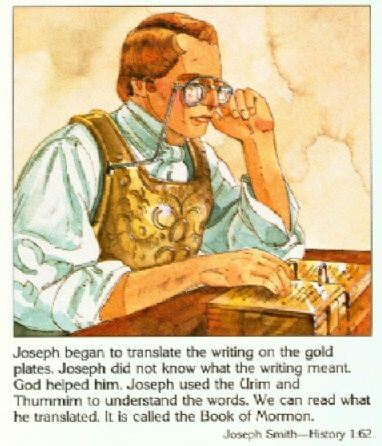Critical analysis of the stone box
Posted: Sun Jun 19, 2011 5:05 pm

Given how little the stone box is discussed I thought I would open a thread dedicated to the critical details of the stone box that Joseph Smith Jr claimed to have found the golden plates as well as a sword, Liahona, and the Urim and Thummim.
I feel we should discuss the items purported to be contained in the stone box to understand and discuss the physical size of the box as well as the atmospheric and environmental sealing abilities.
The plates estimated to have weighed 80-280 lbs depending on who you listen to concerning the metallurgical makeup of the plates. Smith himself said the plates were 8"x6"x6".
Some claim the plates were made of pure gold, which would require the stone box to hermetically seal out all moisture as I have been told this would cause etching of the pure gold.
Others claim it was a gold alloy of some sort, perhaps tumbaga, a gold/copper alloy?

The shape and size of the Liahona was spherical and about the diameter of a man's palm.


The Urim and Thummim is an odd thing. Some Mormon scholars say these were a breast plate with spectacles, other say they were just spectacles, and then there is the story of Joseph looking at glowing magical rocks.

Joseph Smith wrote:JS-H 1:35 Also, that there were two stones in silver bows—and these stones, fastened to a breastplate, constituted what is called the Urim and Thummim—deposited with the plates;
Lastly and most important to the analysis of the size of the box as well as the sealing ability of the box seams and capstone, is Laban sword.
The lenght would need to be at least 36"?
The replica sold at the Mormon church owned bookstore, Deseret Book, is 36"

Given the dimensions of the objects contained in the box, it would appear that the dimensions of the box would need to be long enough to hold the sword, wide and deep enough to hold the breast plate.
Laying the 36" sword in diagonal corner to corner and the minimum width for the breast plate of 18" wide Pythagorean says the minimum length would be 32". The depth would be a minimum of 6" just for the plates but with things stacked on each other in a minimum box size it would likely be 12".
18"x32"x12" are the dimensions of a minimum stone box. That is fairly large.
I know nothing of structural integrity so I will guess the thickness of the wall must be at least 2"?
Any civil engineers want to chime in?
That would be fairly heavy at 2" thick walls and floor placing the weight at 100-150 lbs?
The structural integrity of being perfectly sealed for 1400 years would have required the capstone to be keyed with a 18x32x12" key to perfectly fit the top of the box. Otherwise the shape of the box could be compromised by large tree roots as well as the shifting soil around it causing the seal to break.
To seal it further would require a 1/4-1/2 key in the capstone matched to a grove in the top of the wall.
I hope this gives us all a mental image of the physical dimensions of the box.